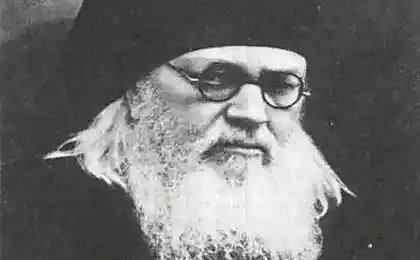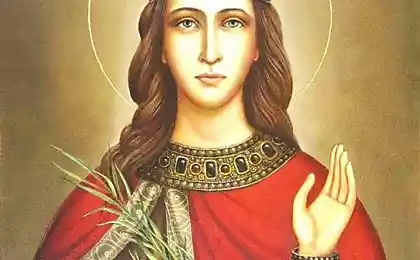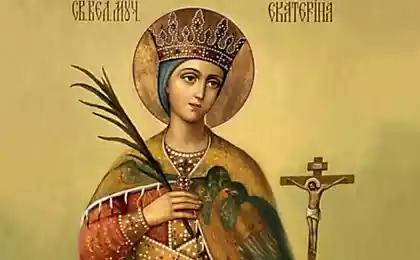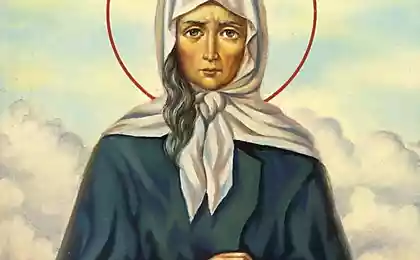221
Traditions on St. Nina's Day
January 27 - Day of St. Equal-to-the-Apostles NinaGeorgian educators. This is a special day, because without this great woman Orthodoxy in Georgia and Armenia could not be at all. Therefore, it is so important to know about St. Nina and honor her memory.
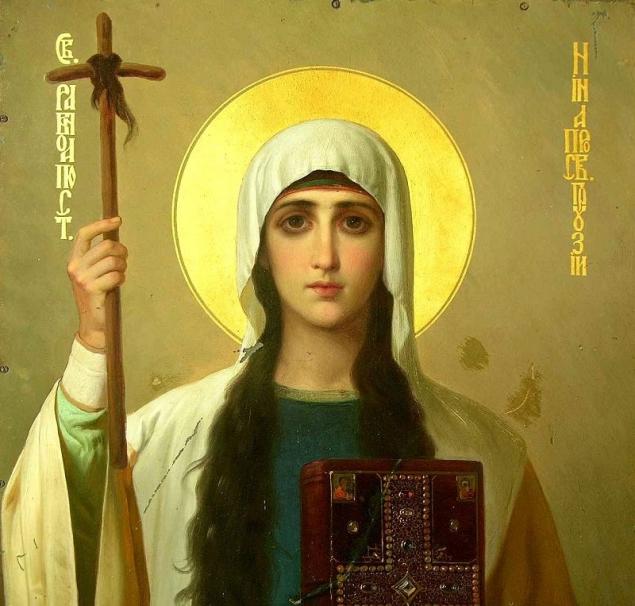
Today's edition. "Site" tell you the story of the saint Nina and tell her what we owe her.
Saint Nina was born around 280 in Cappadocia. Her family was Orthodox and occupied a rather high level. Nina’s mother was the sister of the Patriarch of Jerusalem, and her father was a relative of the Great Martyr George. Nina was brought up in the Christian tradition and received a good education.
The future saint studied with special zeal. One day she became interested in the fate of the imperishable Heaton of the Lord. From the legend she learned that he was transferred to Iberia (the old name of Georgia). Learning that Georgia had not yet accepted Christianity, the saint began to pray to the Virgin Mary, asking for help in the apostolic ministry.
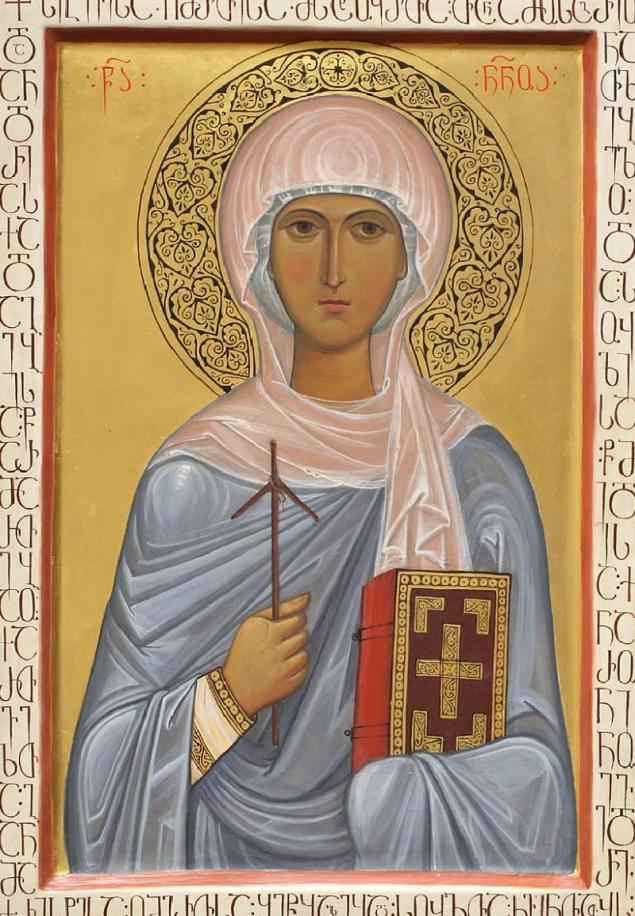
The Virgin heard the girl’s prayers and appeared to her in a dream, handing over a cross from a vine and sending Nina to Iberia. Then Nina decided to devote herself to the apostolic feat, asking for blessings from the Patriarch of Jerusalem. Nina had a difficult path, but the girl believed in success, because the Virgin herself guided her.
Miraculously avoiding death at the hands of the Armenian king Tiridates, she arrived in Georgia. In Mtskheta, the preacher was sheltered by the family of a childless gardener. Nina helped his wife to get rid of infertility, after which they believed in Christ. Nina continued to work miracles, and soon rumors about her spread in the vicinity.
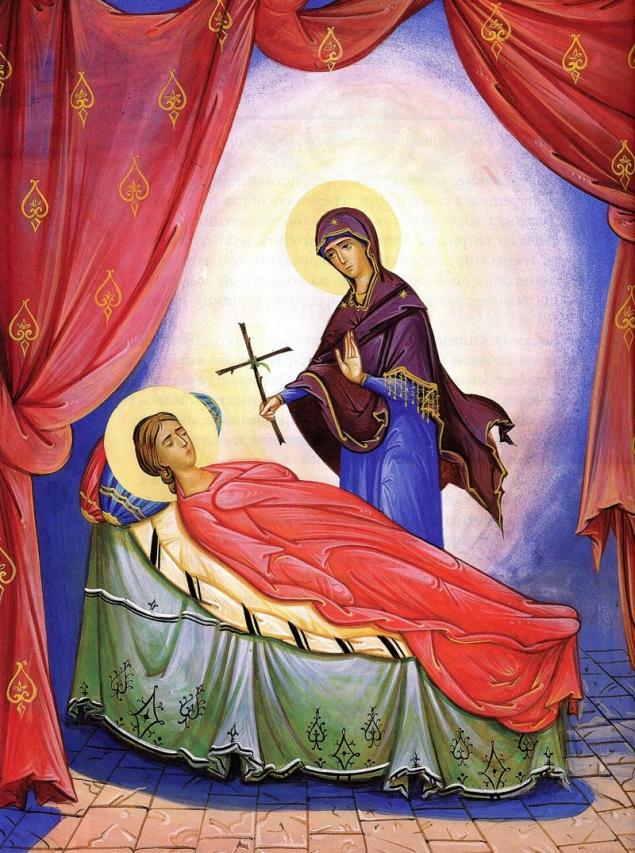
On the feast of the Transfiguration of the Lord, a strong storm threw down the pagan idols from the mountain thanks to the prayer of Nina. Later, the saint healed the Georgian queen Nana from a serious illness. After that, the queen was baptized and became a Christian.
However, her husband, King Mirian, did not believe in these miracles and, on the advice of the pagans, decided to subject the saint to cruel torture. And then the higher forces saved Nina. Suddenly, in the middle of a broad day, the sun darkened, an impenetrable haze enveloped the city, and King Mirian suddenly became blind.
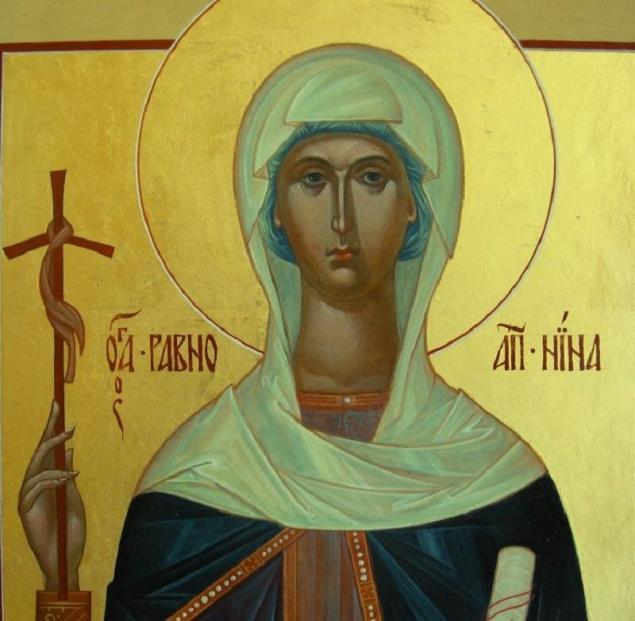
Then the retinue of the king fell to his knees and began to beg for the dawn again, and Mirian saw. But the pagan idols were deaf to prayer. Knowing that the idols would not fulfill their requests, they prayed to the Lord.
The darkness dissipated instantly and the sun rose again. Saint Nina healed the king from blindness. He and his family were baptized and became Christians. At the place where the Hiton of the Lord was opened to Saint Nina, the first Christian church in Georgia was erected.
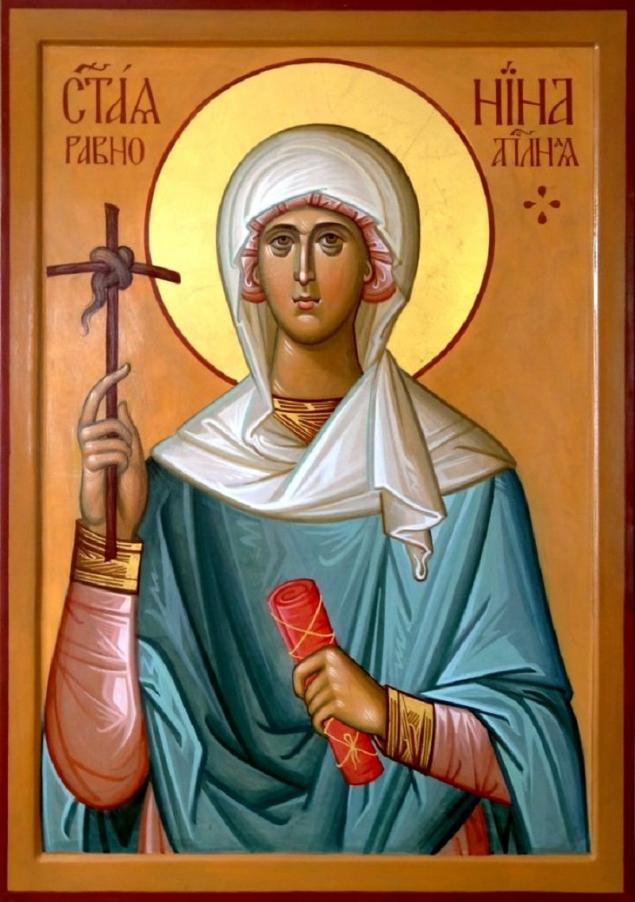
In 324, at the request of Tsar Mirian, a bishop and two priests from Byzantium arrived in Georgia to establish Christianity in Georgia.
After that, Nina continued to heal and perform her wonderful deeds. In 335, Nina went to God. According to her will, the body was buried where she lived in Bodbe. The saint is remembered and revered to this day, because thanks to her Christianity spread to the lands of Georgia.
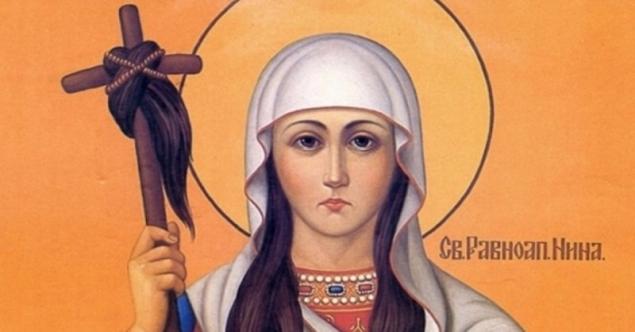
Everyone knows how beautiful Georgia and Armenia are. Perhaps this is the merit of Nina. We recently wrote about why we should visit Armenia. Wonderful country!
For great merits, Saint Nina is also called equal to the apostles. This suggests that she is honored on the same level as the first apostles, the first spreaders of Christianity. Saint Nina is a real historical figure whose deeds are attested by the competent persons of her time.
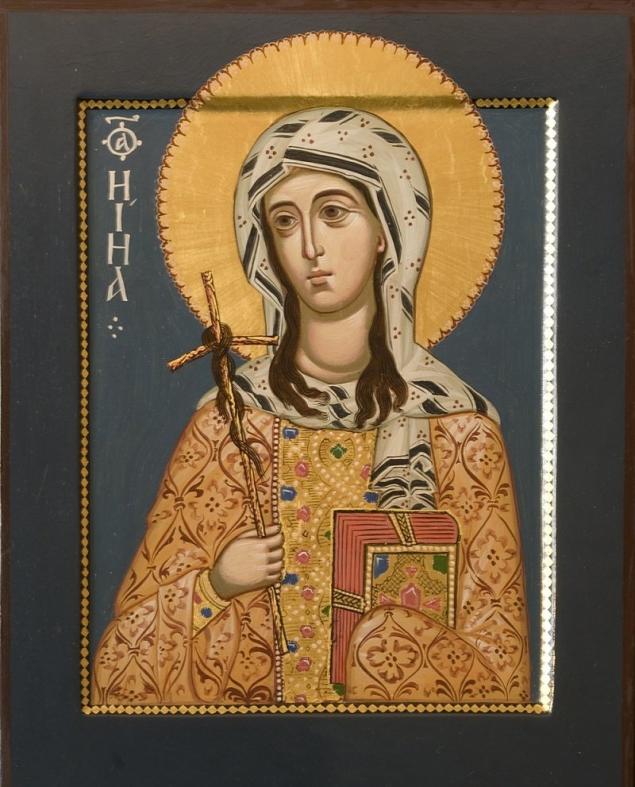
Most of all, St. Nina is revered in Georgia and Armenia. It is there that the traditional liturgy is held with a special scope, a visit to which is mandatory for Orthodox Christians. There are few prohibitions and traditions on this day, because the main thing is still to come to the Liturgy and pray.
On this day, unlike other Orthodox holidays, it was not forbidden to work. You can and should work today. St. Nina herself always worked tirelessly, carrying the word of God to people.
It was important to put the house in order on this day, to do a big cleaning. The villagers believed that milk from a domestic cow on this day will have healing power. If possible, it is worth checking.
Nina is considered the patron saint of all who are baptized with the same name, and also helps those who ask for intercession. Saint Nina protects and helps those who are associated with enlightenment (teachers). She herself was an enlightener and taught people the faith of Christ.
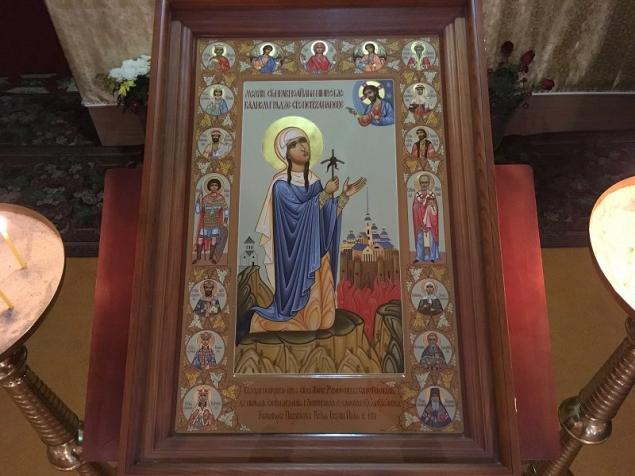
Before the icon of Nina, you can pray for the cure of various diseases and mental illnesses. To turn to the saint, prayer is enough.
“O All-Valved and Preventive Equal-to-the-Apostles Nino, we come to you and kindly ask you: protect us (names) from all evils and sorrows, understand the enemies of the holy Church of Christ, and ask the opponents of piety and pray to the Almighty God our Savior, to whom you now stand, that you may grant the Orthodox people peace, longevity and in every good undertaking haste, and may the Lord lead us to His heavenly Kingdom, to all the saints glorify and praise Him today and in His name.” Amen.
The lives of saints are one of the best sources of wisdom. A clear example of this is the life of Sergius of Radonezh, who is remembered and loved by Orthodox believers to this day.
Did you like the article? Share it with your friends.

Today's edition. "Site" tell you the story of the saint Nina and tell her what we owe her.
Saint Nina was born around 280 in Cappadocia. Her family was Orthodox and occupied a rather high level. Nina’s mother was the sister of the Patriarch of Jerusalem, and her father was a relative of the Great Martyr George. Nina was brought up in the Christian tradition and received a good education.
The future saint studied with special zeal. One day she became interested in the fate of the imperishable Heaton of the Lord. From the legend she learned that he was transferred to Iberia (the old name of Georgia). Learning that Georgia had not yet accepted Christianity, the saint began to pray to the Virgin Mary, asking for help in the apostolic ministry.

The Virgin heard the girl’s prayers and appeared to her in a dream, handing over a cross from a vine and sending Nina to Iberia. Then Nina decided to devote herself to the apostolic feat, asking for blessings from the Patriarch of Jerusalem. Nina had a difficult path, but the girl believed in success, because the Virgin herself guided her.
Miraculously avoiding death at the hands of the Armenian king Tiridates, she arrived in Georgia. In Mtskheta, the preacher was sheltered by the family of a childless gardener. Nina helped his wife to get rid of infertility, after which they believed in Christ. Nina continued to work miracles, and soon rumors about her spread in the vicinity.

On the feast of the Transfiguration of the Lord, a strong storm threw down the pagan idols from the mountain thanks to the prayer of Nina. Later, the saint healed the Georgian queen Nana from a serious illness. After that, the queen was baptized and became a Christian.
However, her husband, King Mirian, did not believe in these miracles and, on the advice of the pagans, decided to subject the saint to cruel torture. And then the higher forces saved Nina. Suddenly, in the middle of a broad day, the sun darkened, an impenetrable haze enveloped the city, and King Mirian suddenly became blind.

Then the retinue of the king fell to his knees and began to beg for the dawn again, and Mirian saw. But the pagan idols were deaf to prayer. Knowing that the idols would not fulfill their requests, they prayed to the Lord.
The darkness dissipated instantly and the sun rose again. Saint Nina healed the king from blindness. He and his family were baptized and became Christians. At the place where the Hiton of the Lord was opened to Saint Nina, the first Christian church in Georgia was erected.

In 324, at the request of Tsar Mirian, a bishop and two priests from Byzantium arrived in Georgia to establish Christianity in Georgia.
After that, Nina continued to heal and perform her wonderful deeds. In 335, Nina went to God. According to her will, the body was buried where she lived in Bodbe. The saint is remembered and revered to this day, because thanks to her Christianity spread to the lands of Georgia.

Everyone knows how beautiful Georgia and Armenia are. Perhaps this is the merit of Nina. We recently wrote about why we should visit Armenia. Wonderful country!
For great merits, Saint Nina is also called equal to the apostles. This suggests that she is honored on the same level as the first apostles, the first spreaders of Christianity. Saint Nina is a real historical figure whose deeds are attested by the competent persons of her time.

Most of all, St. Nina is revered in Georgia and Armenia. It is there that the traditional liturgy is held with a special scope, a visit to which is mandatory for Orthodox Christians. There are few prohibitions and traditions on this day, because the main thing is still to come to the Liturgy and pray.
On this day, unlike other Orthodox holidays, it was not forbidden to work. You can and should work today. St. Nina herself always worked tirelessly, carrying the word of God to people.
It was important to put the house in order on this day, to do a big cleaning. The villagers believed that milk from a domestic cow on this day will have healing power. If possible, it is worth checking.
Nina is considered the patron saint of all who are baptized with the same name, and also helps those who ask for intercession. Saint Nina protects and helps those who are associated with enlightenment (teachers). She herself was an enlightener and taught people the faith of Christ.

Before the icon of Nina, you can pray for the cure of various diseases and mental illnesses. To turn to the saint, prayer is enough.
“O All-Valved and Preventive Equal-to-the-Apostles Nino, we come to you and kindly ask you: protect us (names) from all evils and sorrows, understand the enemies of the holy Church of Christ, and ask the opponents of piety and pray to the Almighty God our Savior, to whom you now stand, that you may grant the Orthodox people peace, longevity and in every good undertaking haste, and may the Lord lead us to His heavenly Kingdom, to all the saints glorify and praise Him today and in His name.” Amen.
The lives of saints are one of the best sources of wisdom. A clear example of this is the life of Sergius of Radonezh, who is remembered and loved by Orthodox believers to this day.
Did you like the article? Share it with your friends.

